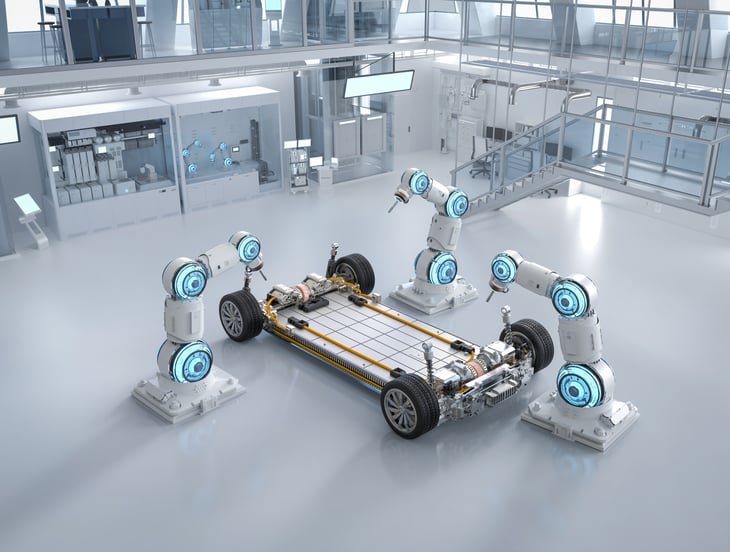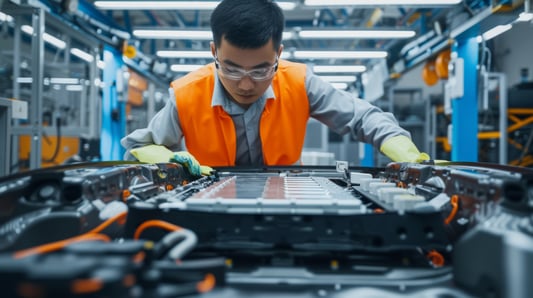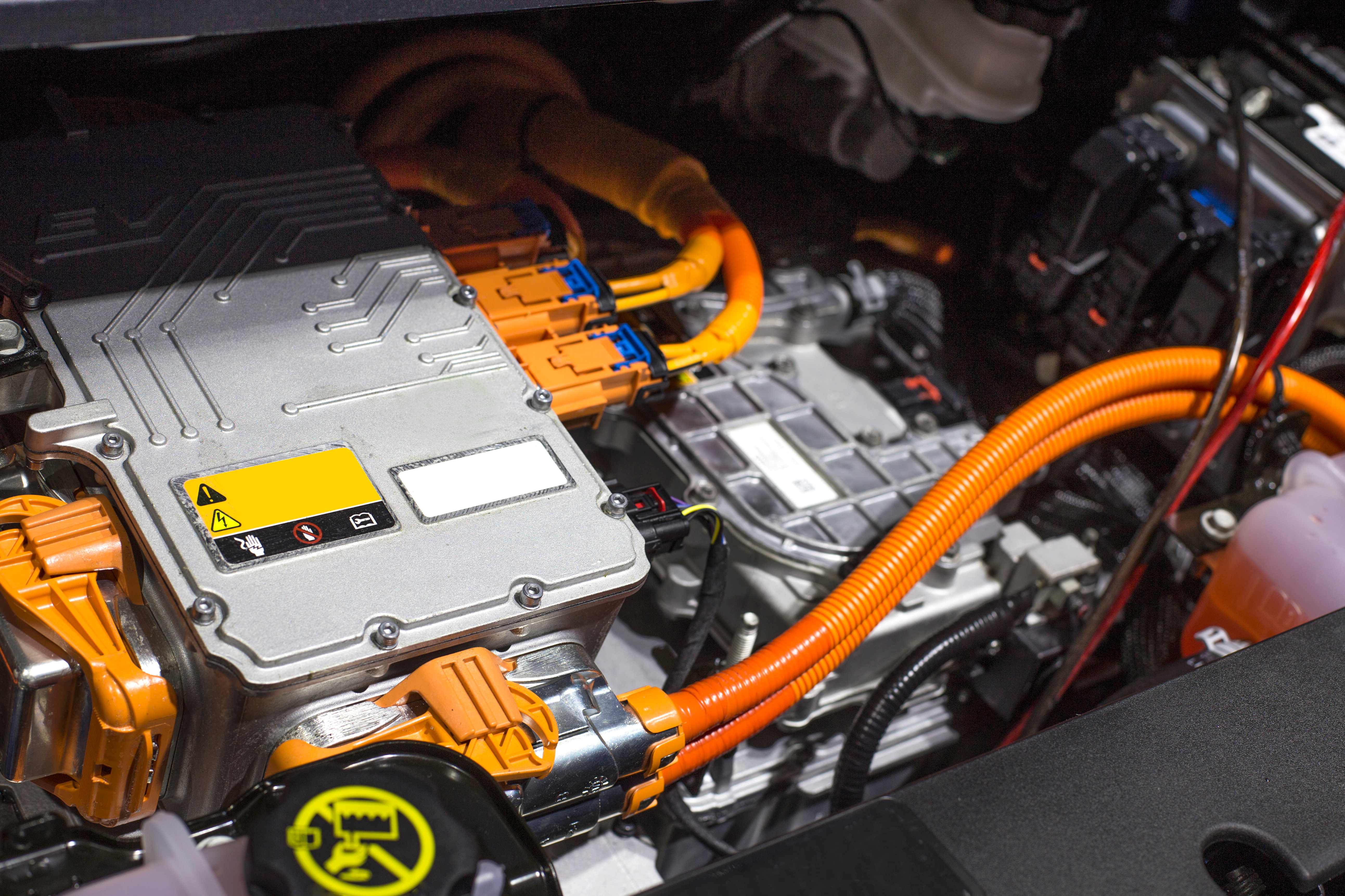Software, Electricity & China
CX Insights - Trend Watch - Automotive Industry (ICYMI February 2024)
ICYMI - Welcome to this month’s edition of our trending topics update! February started with Super Bowl LVIII – personally, I would’ve rather seen the Lions reach the biggest stage in football and keep the Michigan winning streak going – and it was an exciting game. The car industry was represented during the commercials (albeit a bit less than other years) in the almost as important viewing experience (for some most important) – Super Bowl advertising.
From DeLorean stretch limos to Kia EVs and more, relive 2024’s auto ads here.
Beyond the Super Bowl, February’s news focused on three key topics: a slowdown in EV forecasts and plans; increasing importance of technology/software in cars; and potential entry of mass electric vehicles from China. Let’s take a look!

The Slowdown
Early quarterly reports are in for OEMs hoping for a fiscal boost with EV sales, and the reports aren’t looking good.
Bloomberg posted that EV titans BYD and Tesla reported lower sales growth so far this year, with stock price dipping for both after the article was published. On the other hand, Volvo and GM scaled back their commitments to ramping up EV production, instead opting to focus their efforts on the immediate present regarding auto demands. This approach has certainly helped their stock value, but the question remains: Why the sudden turnabout?
This trend could be in part explained by consumer sentiment. Ford recently published their 2024 Trend Report – they found that while nearly half polled in their global surveys agree that EVs are the future, only a mere 4% are ready to take that step personally. Could an all EV future be further away than we think?
McKinsey corroborates Ford’s report that consumers are passively waiting for the right time to switch, but they add that what’s holding their purchasing power back is the lack of charging stations. Once EV stations become as commonplace as, say, gas stations, buy-in will happen. Senior Partner of McKinsey’s Center for Future Mobility Phillip Kampshoff elaborates this point during CES 2024 and in this article here.
Washington D.C. has taken notice as well and has proposed easing up on previously established tailpipe emission rules initially set to aggressively spark the transition from combustion-based to electric-based vehicles. This change from the Biden administration comes at the request of several OEMs as well as the UAW, citing EV technology as too costly to consumers and requiring more time to develop a sensible solution.
No Stopping Softwaritization
Since last year when I first heard about this term, it seems like news about multiple plans and projects never stop. Having come from the IT industry, I keep reminding my team how fast business revenue has migrated from hardware to software AND then services. I’m certain we’ll see similar trends in the auto industry – or should I say mobility industry?
At CES earlier this year, a common buzzword was “software-defined vehicle” – or SDV for short. As a reminder, SDV is the implementation of software into commercial and passenger vehicles – anything that encompasses on-demand services, infotainment and improvement patches. It’s something that consumers are increasingly demanding, as how best to implement best practices are an ongoing conversation between all OEMs.
On Motortrend.com, Honda’s Assistant Vice President of Digital Services Development Division Raj Manakkal sits down to discuss what he observed regarding Honda’s transition from a hardware-focused automaker to a software-focused one. He brings over 25 years of insights during his time at Honda to predict what OEMs must do to stay ahead of the development curve – read for yourself and see if his thoughts align with what you’ve noticed over the past few years.
General Motors is taking the softwaritization wars very seriously, indeed. So much so that they’re making OnStar a standard feature on all their cheaper models moving forward! Beginning in 2025, whether it’s a new Chevrolet, GMC, Cadillac, Buick or anything in between, all vehicles will have remote vehicle commands, voice assistance, automatic crash response and more totally free.
They’ve also recently announced that they’re making their own suite (don’t call it an app store) of automotive software services, dubbed SDVerse. A joint project by GM, Magna International and Wipro Limited, SDVerse is projected to generate $20-25 billion in revenue annually by creating a one-stop marketplace for auto system software across the industry. It’s set to launch later this year, but it’s still in deep development. I’m sure we’ll report more about it closer to launch!
February News Hearts China
And finally, the topic of Chinese EVs has been very present in February news. Here are a couple of articles that I feel encompasses most of what I read; it’s definitely a topic that will continue to unfold in the U.S. market.
For instance, while my earlier writings detailed a domestic auto industry that is seeking something to break through consumer hesitation. Financially speaking, China already has that covered, as they were a recurring topic at the Chicago Federal Reserve Automotive Insights Symposium hosted in Detroit late January. IndustryWeek offers five things the average consumer should know about China and EVs – and the impact their market dominance will have on their EV shopping experience.
It's a topic that has the Biden administration wondering how best to approach and protect domestic EV commerce. The US Commerce Department is presently weighing how best to regulate how China-linked firms provide goods and services for their EVs and connected cars, citing potential domestic security concerns as auto technology grows increasingly sophisticated around the world.
For further information on how we got to where we are, I encourage you to check out our previous ICYMI blog posts throughout 2023 and early 2024.
- January 2024: How Intelligent Is Our Future?
- December 2023: 2024: Year of the Electric Intelligence
- November 2023: Keep the EV Engine Running for 2024


 By
By
.png)

